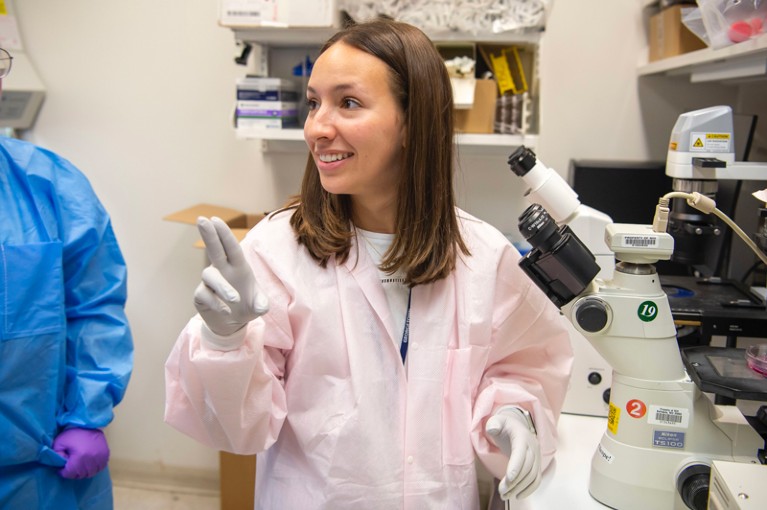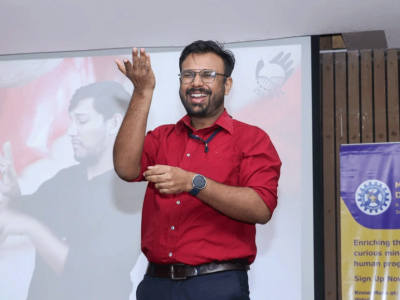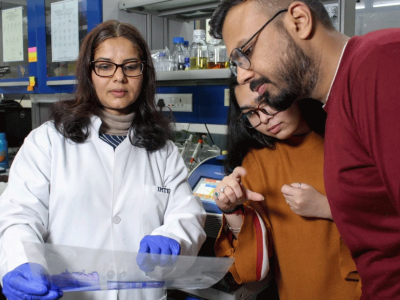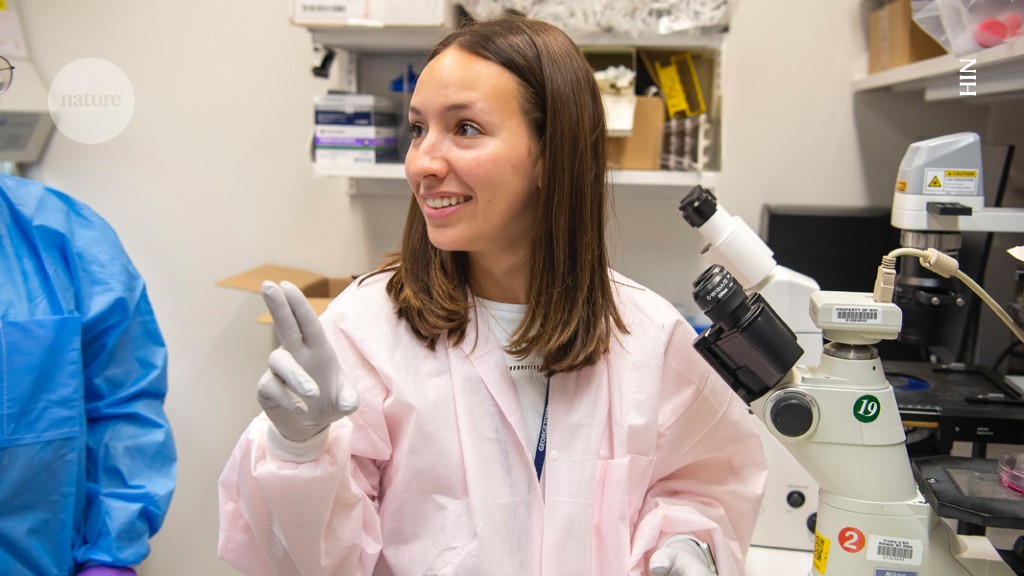[ad_1]

Megan Majocha, a tumour-biology researcher in the laboratory at the US National Institutes of Health in Bethesda, Maryland, says Deaf researchers shouldn’t have to spend time developing sign language for their science.Credit: NIH
I am from a third-generation Deaf family in Pittsburgh, Pennsylvania. I went to a primary school for Deaf children and then to a mainstream secondary school at the age of 12. My parents thought it would be a good idea for me to learn how to work with interpreters in the mainstream, hearing world while I was at school, so that I had exposure to both worlds.
I worked with the same interpreter for six years from grade 7 (age 12) until the end of secondary school. We collaborated to develop signs for scientific terms — asking each other, “Would this sign make sense for this specific term,” and that kind of thing. It was a lot of work for me in my early teens, to try to develop these scientific signs as well as learning the subject content.
I started my PhD in August 2019 at Georgetown University in Washington DC. I am in my fifth year and I expect to defend my thesis in the next few months. Speaking to a few other Deaf scientists during my PhD, I learnt that we all have different signs for scientific terms: even though they have the same meaning in English, we all sign them differently because we have all developed our own separate ways of signing terms that aren’t in the American Sign Language (ASL) dictionary.
I had to develop my own team of interpreters for my first-year graduate school courses. They worked with me Monday to Friday for each course I took and in the laboratory. It is beneficial to have that consistency for both me and my interpreting team, because we can develop signs together and the interpreters can become familiar with my work and the content of the course for each class.

Adding scientific signs to Indian Sign Language will create a more inclusive field for deaf students
By law, US universities are required to provide and pay for interpreters, so both my institutions, Georgetown University and the US National Institutes of Health (NIH) in Bethesda, Maryland, provide interpreters at no cost to me.
I have to be conscious of how an interpreter might voice my research and scientific ideas to my colleagues, collaborators and prospective mentors. I’d be hesitant to pick an interpreter whom I didn’t know to speak on my behalf, especially for a formal presentation — partly because some scientific terms share the same sign. For example, the signs for the words ‘dye’ and ‘stain’ are the same in ASL — on both hands the index finger and thumb are touching, the other fingers are extended with the palms facing down, and the hands move up and down to represent dipping a material into a dye. Although it’s the same sign, the English words have completely different meanings in the scientific field. If I’m doing a presentation and the interpreter uses the wrong word, that can make me look like I’m not knowledgeable and that I don’t know what I’m talking about.
Having an interpreter who’s motivated to learn these nuances is really important. For example, the interpreters here at the NIH watch the lab team do experiments and ask questions about our research, which is helpful. When I have to stop to explain things, I try not to think of it as wasting my time, when I could be doing my own work. Sometimes I have to take a few minutes to explain a process or concept while I do an experiment, but that can be beneficial in the long run.
Progress and burnout
I’ve focused on developing signs that work for me and my interpreters. But ASL has specific grammar rules for each sign, which a lot of the signs my interpreters and I have created probably don’t follow. That’s one of our many challenges: to develop signs for all Deaf scientists that follow the official ASL grammar rules.
Three other Deaf people work in my lab. One is a biologist who has worked here for more than 20 years. He’s developed a spreadsheet of scientific words and an explanation of how you sign each one. For example, the sign I use for metastasis starts with both hands facing each other with the fingers bent and moving in a zigzag motion, which indicates disorder, then both hands are extended forward simultaneously, moving apart to represent the cells spreading out.

What’s the sign for ‘centrifuge’? How we added scientific terms to Indian Sign Language
But this is not necessarily the best way to preserve a visual, signed language. Therefore, we are trying to develop a way to film the signs so that interpreters watching the videos can learn them. That would be a much better resource.
All of this has been a lot of work. I would love to have the chance to focus solely on my research, but I’ve been juggling my time between research, creating signs, working with my network of interpreters and everything else. The COVID-19 pandemic added to the problem. Before COVID-19, interpreters worked on site all the time. But now many of them prefer to work remotely. However, interpreting through a video call is not as useful as having an interpreter in the lab. We need them on site for spontaneous conversations when we’re troubleshooting protocols. This has made it even harder to find interpreters who can work at this level of science.
I am feeling burnt out from all this legwork. My energy should be invested in my research and my coursework, not making sure each interpreter understands what’s going on. It’s so much to manage, sometimes I feel like I have earned a PhD in linguistics, too. Continuing research after my PhD is still one of my options, but I’m also looking into project management or consultant jobs that use the knowledge and skills that I have developed.
This interview has been edited for length and clarity.
[ad_2]
Source Article Link

